| Authors: | Ángeles G. Mayor, V Ramón Vallejo, Susana Bautista with Peter de Ruiter, Lia Hemerik, Violette Geissen, Jaap Bloem, Jacob Kéizer, Óscar González-Pelayo, Ana Isabel Machado, Ana Vasques, Christel van Eck, Martinho Martins, Paula Maia, Alejandro Valdecantos, Jaime Baeza, Joan Llovet and David Fuentes |
| Editor: | Jane Brandt |
| Source document: | Mayor et al. (2015) Identification of critical changes preceding catastrophic shifts: ecosystems affeced by increasing wildfire recurrence. CASCADE Project Deliverable 3.1a |
Values of soil organic C and nutrients in relation to fire recurrence, and ANOVA results for the soil variables of the Valencia site are shown in Figure 1 and Table 1. Most soil variables showed a decreasing trend from unburned soils to soils burned with the highest fire recurrence. However differences between recurrence levels were only significant for NH4 and NH4:N ratio, which had similar and highest values for long unburned areas and decreasing values with increasing fire recurrence. Microsite had a significant effect on soil organic C and total N. Thus, Q. coccifera microsites showed the highest value for both variables, while R. officinalis microsites were lowest in soil organic C and intershrub microsites were lowest in total N (data not shown). Q. coccifera microsites also showed the highest value for potentially mineralizable N but differences with the other microsites were only marginally significant.
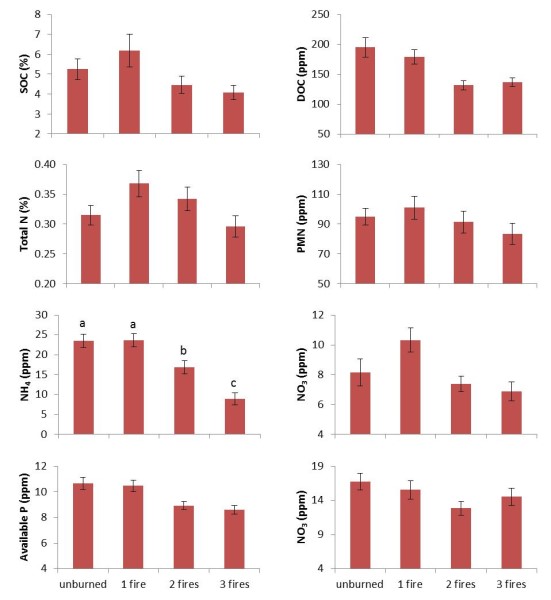
Figure 1 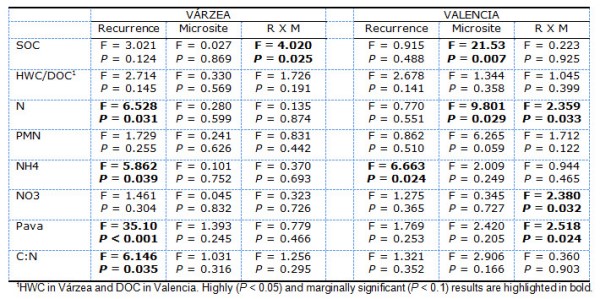
Table 1
Two components of the PCA performed with the soil organic matter quantity matrix had eigenvalues higher than one and captured 68% of the variance in the data (Figure 2). Most variables were highly correlated to the first component, while the second component had the highest correlation with dissolved organic carbon. Also two components of the PCA performed with the soil organic matter quality matrix had an eigenvalue higher than one, explaining over 67% of its total variance. DOC:SOC and Pava:SOC showed the highest correlations with the first component, while NH4:N and NO3:N were most strongly (and negatively) related to the second component (Figure 2). The two components of the PCA performed with the quantity matrix, separated unburned and one fire from two and three fires, with higher values for the first group (Figure 2). However, differences between these two groups were not significant due to the high variability between blocks (Figure 3). Microsite also had no significant effect on any of the two components, but the interaction Recurrence X Microsite was highly significant for the first component. The independent ANOVAs performed with this component for the three microsites assessed (patches of Q. coccifera, patches of R. officinalis and intershrub) gave a significant effect of fire recurrence in the case of the intershrub, which decreased gradually from unburned to three fires (Figure 4). Recurrence X Microsite was also marginally significant for the second component, and the independent ANOVAs performed with this component for the three microsites gave a significant effect of fire recurrence in the case of the Q. coccifera patch, which decreased gradually from long unburned to twice burnt plots (Figure 4). The second component of the PCA performed with the quality matrix, also separated unburned and one fire from two and three fires. However, none of the factors nor their interaction had significant effects on any of the two components, again due to the high variability between the three areas analysed (data not shown).
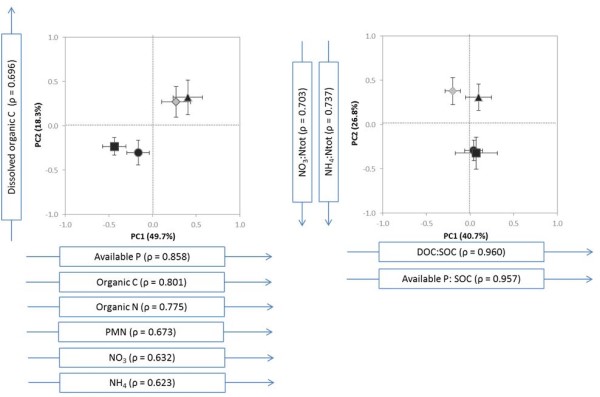
Figure 2 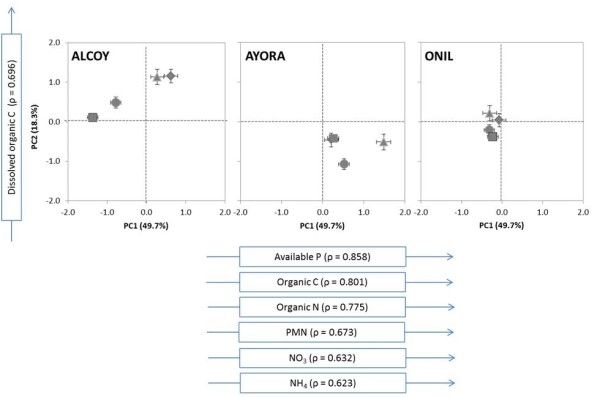
Figure 3 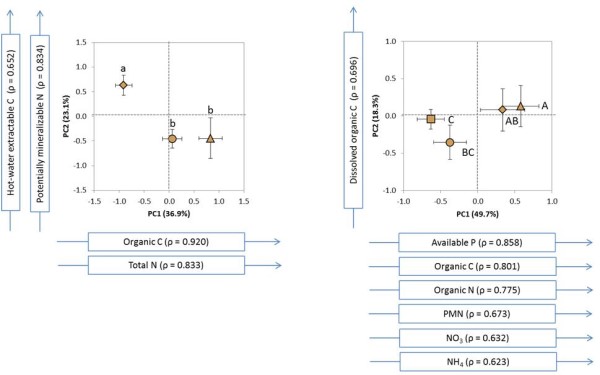
Figure 4
Note: For a full description the context within which this work at Ayroa was done and the methods used, see
